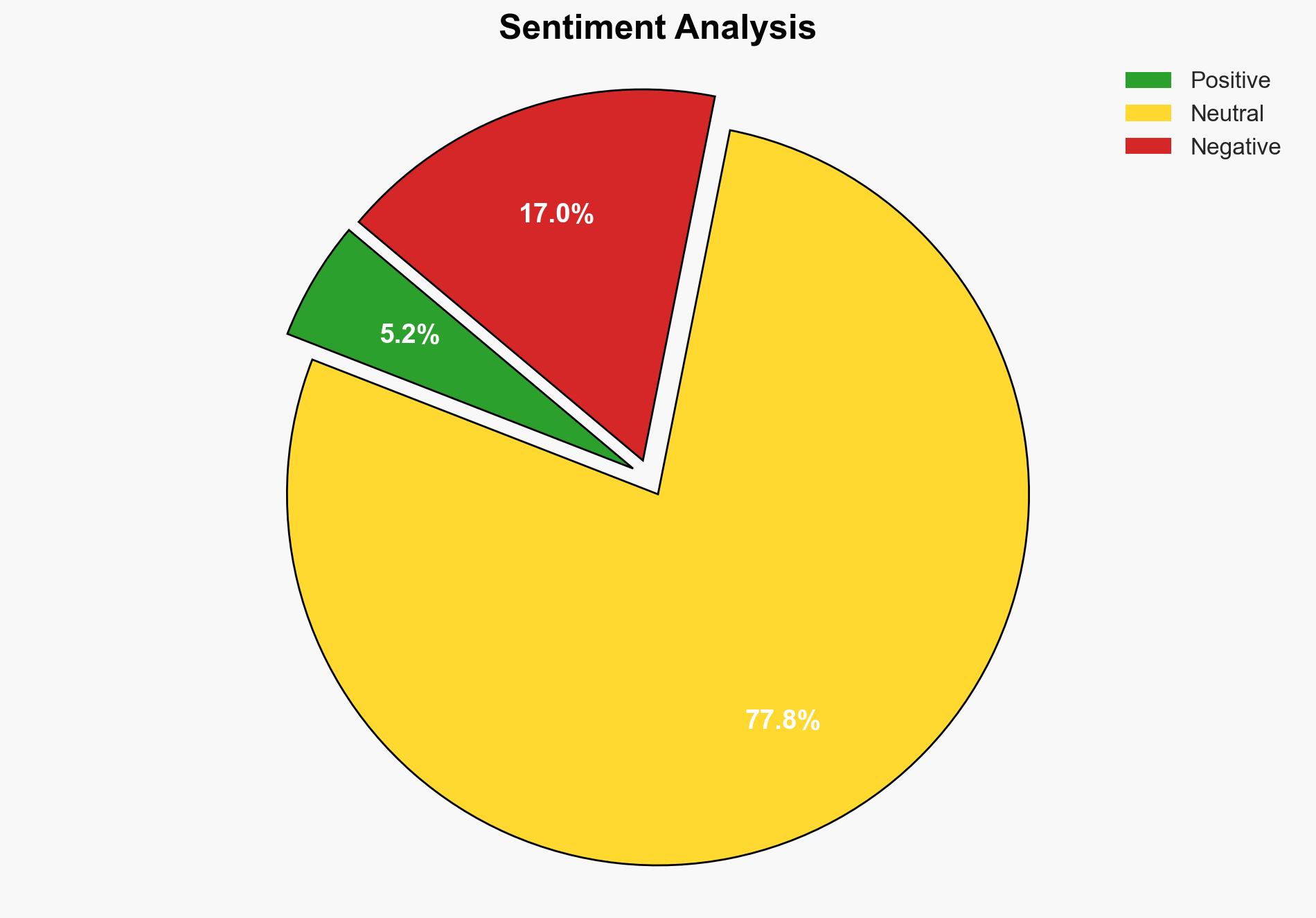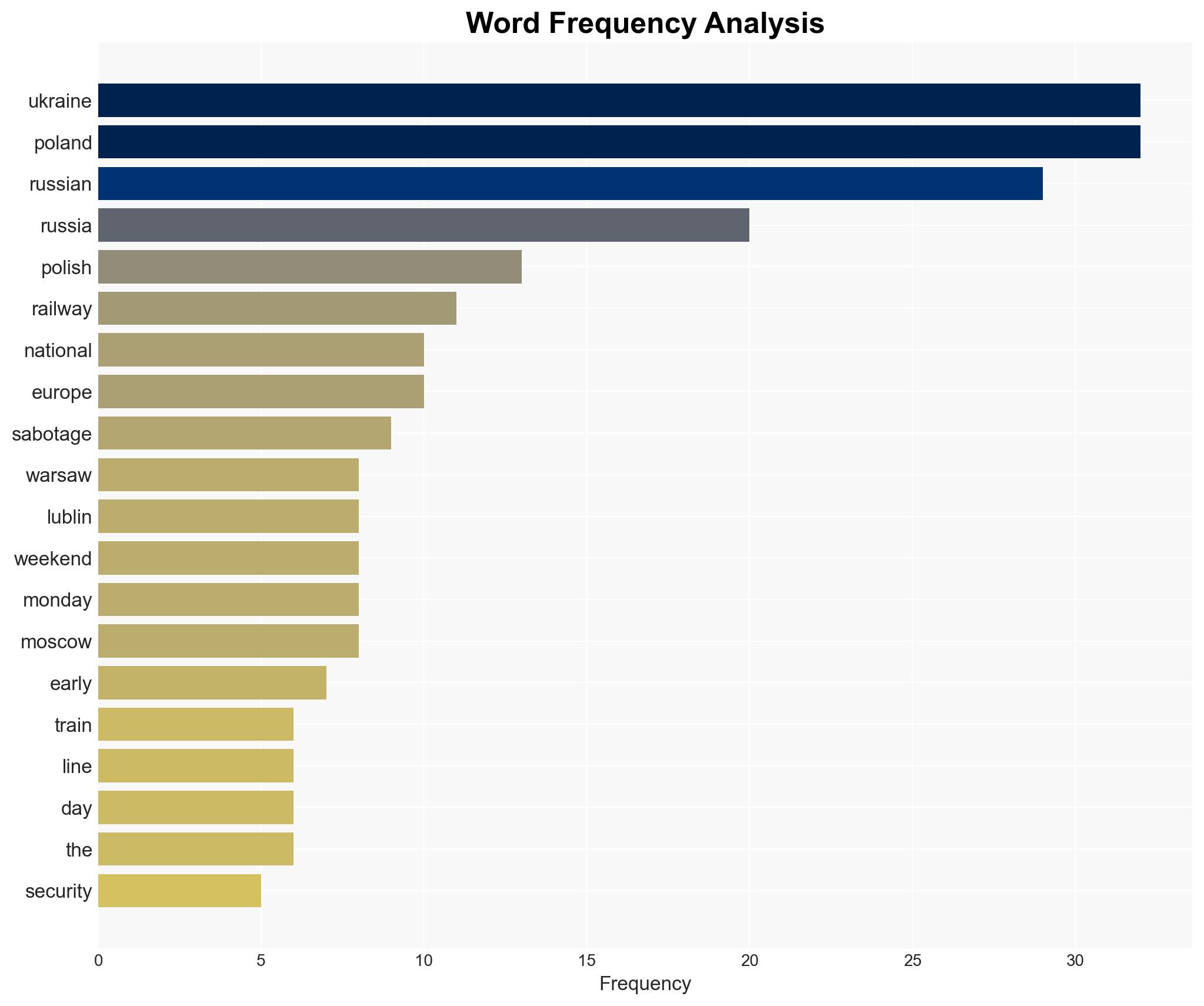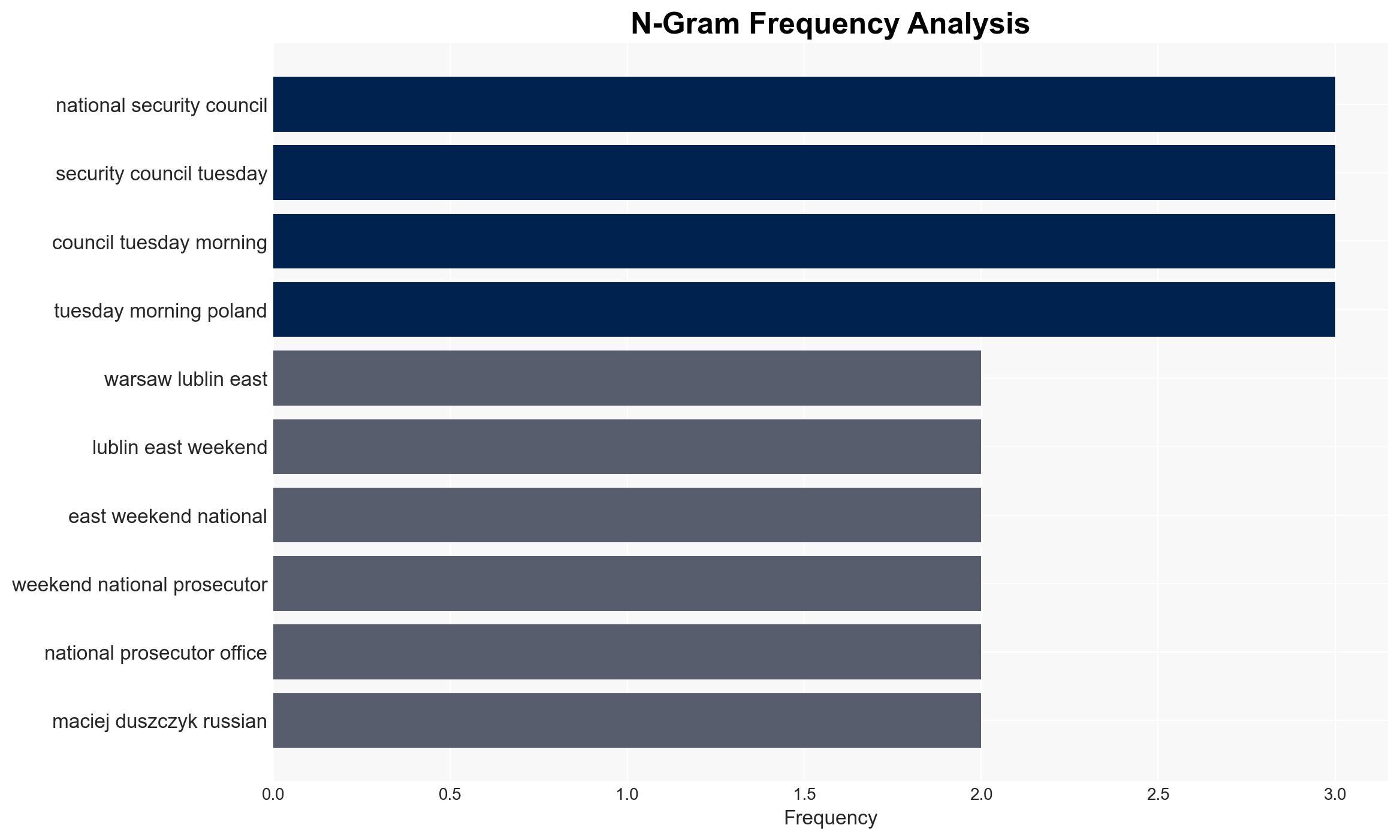‘Unprecedented Act of Sabotage’ Strategic NATO Railway Used to Resupply Ukraine ‘Bombed’ – Breitbart News
Published on: 2025-11-17
AI-powered OSINT brief from verified open sources. Automated NLP signal extraction with human verification. See our Methodology and Why WorldWideWatchers.
Intelligence Report:
1. BLUF (Bottom Line Up Front)
There is a high likelihood that the sabotage of the NATO railway in Poland was an act of deliberate disruption, potentially involving Russian operatives or proxies, aimed at destabilizing NATO’s logistical support to Ukraine. Immediate actions should focus on enhancing security measures along critical infrastructure and increasing intelligence cooperation among NATO allies to prevent further incidents.
2. Competing Hypotheses
Hypothesis 1: The sabotage was orchestrated by Russian operatives or proxies to disrupt NATO’s supply lines to Ukraine. This hypothesis is supported by historical patterns of Russian sabotage activities and the strategic importance of the railway line.
Hypothesis 2: The sabotage was conducted by non-state actors or domestic groups within Poland, possibly motivated by anti-government sentiments or other local grievances. This hypothesis considers the possibility of internal dissent being expressed through acts of sabotage.
Hypothesis 1 is more likely given the geopolitical context, Russia’s past behavior in similar scenarios, and the strategic importance of the railway to the ongoing conflict in Ukraine.
3. Key Assumptions and Red Flags
Assumptions include the belief that Russia has the capability and intent to conduct such operations and that the railway’s strategic importance makes it a target. Red flags include the timing of the incident coinciding with increased tensions in the region and the potential for misattribution of the attack, which could lead to escalation.
4. Implications and Strategic Risks
The sabotage could lead to heightened tensions between NATO and Russia, potentially escalating into broader conflict. There is also a risk of copycat attacks on other critical infrastructure, both within Poland and in other NATO countries. Economically, disruptions in supply lines could impact military and humanitarian support to Ukraine.
5. Recommendations and Outlook
- Enhance surveillance and security measures along critical infrastructure routes.
- Increase intelligence sharing and coordination among NATO allies to identify and mitigate threats.
- Engage in diplomatic efforts to de-escalate tensions and communicate red lines to Russia.
- Best-case scenario: Enhanced security measures prevent further incidents, and diplomatic efforts reduce tensions.
- Worst-case scenario: Additional sabotage incidents occur, leading to military escalation between NATO and Russia.
- Most-likely scenario: Continued low-level sabotage attempts with increased security measures mitigating major disruptions.
6. Key Individuals and Entities
Donald Tusk (Poland Prime Minister), Maciej Duszczyk (Deputy Interior Minister), Tomasz Siemoniak (National Secret Service Official), Andrzej Derlatka (Chief Polish Intelligence Agency).
7. Thematic Tags
Structured Analytic Techniques Applied
- Cognitive Bias Stress Test: Expose and correct potential biases in assessments through red-teaming and structured challenge.
- Bayesian Scenario Modeling: Use probabilistic forecasting for conflict trajectories or escalation likelihood.
- Network Influence Mapping: Map relationships between state and non-state actors for impact estimation.
Explore more:
National Security Threats Briefs ·
Daily Summary ·
Support us
·





